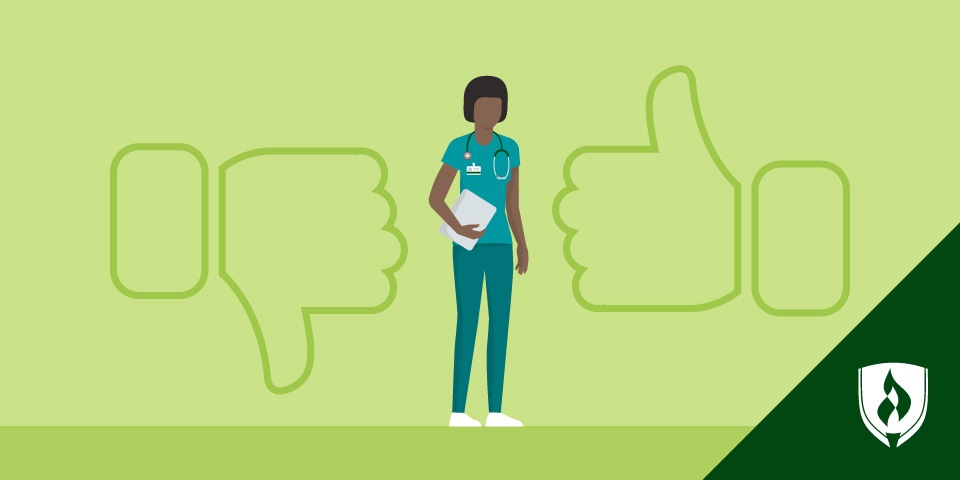
If you’ve ever called a clinic to make an appointment—or even walked into a healthcare institution of any kind, you’ve likely witnessed medical assistants (MAs) in action. These healthcare professionals are often the first face a patient sees in a clinic or hospital.
But the friendly greeting and screening questions you received barely scratch the surface on what medical assistants get up to. This role is extremely versatile.
“What most surprised me was the broad spectrum of responsibilities and duties that a CMA (certified medical assistant) has to perform,” says Raymond Ford, CMA at MAXiM Hair Restoration. “The job doesn't just involve ‘assisting the doctor.’ The scope is far beyond that—and can extend even further if you are deemed capable.”
Many medical assistants will have a mix of administrative duties and clinical duties. Or, if they work in a larger practice or hospital, they might specialize in one of those areas, according the Bureau of Labor Statistics (BLS).1
Are you curious about a day in the life of a medical assistant? Read on for some of the most common medical assistant duties and an in-depth breakdown on what a day as an MA looks like.
Common medical assistant duties
Medical assistants are the administrative glue holding healthcare facilities together. But since they are also able to perform some clinical duties, they wind up filling all sorts of gaps in a healthcare environment.
Medical assistants typically record patient history and personal information, measure vital signs, assist physicians with examinations, give injections or medications as permitted by law, schedule appointments, prepare samples for lab tests and update EHR (electronic health record) information, according to the BLS.1
A medical assistant could give you a flu shot, schedule your next appointment, update your allergy information and measure your height. And in specialty clinics, they perform specialized tasks, like demonstrating how to insert, remove, and care for contact lenses at ophthalmic clinics or make castings of feet in podiatrist clinics.
If you think you’d prefer a wide variety of duties in your workday, the job description of a medical assistant might be just what you are looking for!
A day in the life of a medical assistant
“My day as a Certified Medical Assistant starts early and ends late,” Ford says, offering a snapshot of his average day.
Morning duties
“I begin my day by logging into the EHR system and reviewing the schedule for the day including surgical procedures, consultations and pre- and post-ops on the schedule.”
In the morning, Ford also ensures that any leftover tasks from the day before are finished, meets with the physician and nurse on staff and examines the procedure room to ensure everything is functioning, sterilized and ready to go.
“Then, I review the medical chart of the first patient, who is generally a surgical patient,” Ford explains. “I ensure that all paperwork is complete, and I review all financial information to make sure there are no pending co-pays or payments.” Ford also talks with the patient to ask about last-minute concerns, allergies and medications.
The doctor and nurse generally instruct Ford on what he should do for a particular patient. “It may include taking vitals, weight, height, blood pressure, etc... I enter this into the EHR and report the vital signs and statistics as well as any discrepancies.”
After this, Ford escorts the patient into the procedure room, helps them get comfy and talks with any family members. “When the procedure begins, I assist the doctor in multiple aspects of the procedure.” In Ford’s clinic, these duties might include harvesting tissue, dissecting grafts, placing grafts, autoclave and sterilization of instruments, as well being a liaison for all people involved.
Break times
“During periodic breaks, I make sure that the patient is well hydrated, check on the front desk, and address any minor issues that can come up,” Ford says. Whether that means dealing with a patient issue or complaint, solving an administrative or billing issue, following up with a patient who has questions or trying to fix a piece of equipment that is malfunctioning, Ford tries to troubleshoot and keep things running smoothly.
Afternoon duties
“Once the procedure is well underway or approaching completion, my functions generally focus on handling pre-ops, post-ops, consultations, following up with patients, and handling other administrative duties,” Ford says, adding that he often fields prospective patient questions as well.
Once the procedure is complete, Ford communicates post-op instructions to the patient and makes sure that patients are fine and alert when leaving the facility. “I am also responsible for making sure that the procedure room has been wiped clean and that all decontamination procedures are followed. All floors need to be mopped and wiped clean, free of any stains or blood.”
Is it hard to be a medical assistant?
Seeing all these different MA duties might make you wonder if this career is difficult, and while it’s not without its challenges, MAs often feel a deep satisfaction in the work they do. “Assisting the physician during the procedure and partaking in advanced clinical assisting tasks really makes my day exciting and interesting,” Ford says. He adds that he loves seeing happy patients who are satisfied with their clinical outcomes. “It gives me tremendous gratitude and peace of mind.”
Still, working as an MA isn’t for everyone. Skills in various areas can make a huge difference in how much someone would enjoy medical assisting. Ford says dexterity, focus, organization, communication, interpersonal skills, and basic analytical ability can make a huge difference.
“Needless to say, CMAs must exhibit compassion and care towards their patients and provide a very high level of customer service,” Ford adds.
Medical assistants need to know medical terminology, the names of the instruments, how to interact with patients, how to code both paper and electronic health records and how to record patient information, according to the BLS.1 Medical assisting programs focus on giving students the skills and knowledge base they will need to succeed in this career.
The benefit of becoming a medical assistant
No one can just roll out of bed one morning and succeed as a medical assistant. It takes training, skill and experience to do this job well. But the benefit of investing that time can be a career that offers exciting clinical experiences and plenty of room to advance and specialize.
“You are doing a lot of the basic stuff that a doctor does, and you're very close to the action, which is thrilling,” Ford says. “And the more capable you are, the more the doctors will entrust you with responsibility.” Ford emphasizes that certified medical assistants can progress to become clinic managers and more.
“Don’t be short-sighted about this career,” Ford urges. “It could be a stepping stone to a long-term health care career as an Administrator, Consultant or Executive—or even a pathway to a clinical career as a PA, NP, RN or physician.”
If this career path sounds good to you, get an idea of what it takes to arrive at your first day in the life of a medical assistant with our article, “How to Become a Medical Assistant: The Steps You Can’t Ignore.”
1Bureau of Labor Statistics, U.S. Department of Labor, Occupational Outlook Handbook, [accessed April, 2020] www.bls.gov/ooh/. Information represents national, averaged data for the occupations listed and includes workers at all levels of education and experience. This data does not represent starting salaries. Employment conditions in your area may vary.




